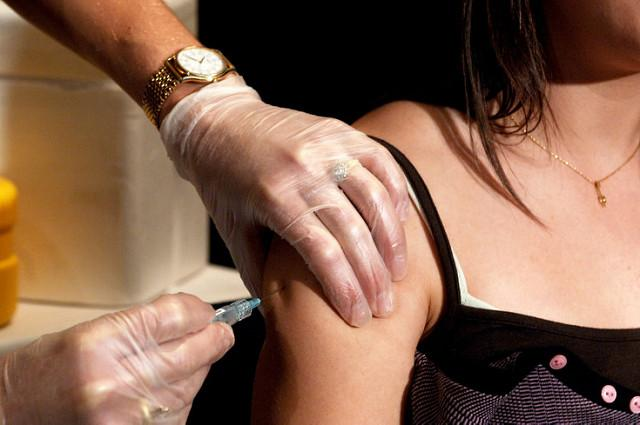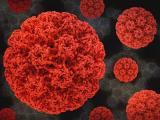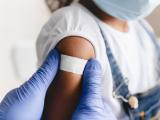Two new studies describe rates of invasive cervical cancer among women vaccinated against human papillomavirus (HPV, the causative pathogen) dropping to zero in Scotland with early vaccination but rising in women in low-income US counties.
No cases when vaccinated at age 12 or 13
Last week in the Journal of the National Cancer Institute, a Public Health Scotland–led team published the results of an observational study using data from the Scottish cervical cancer screening system on women born from January 1988 to June 1996 and immunized against HPV at age 12 or 13 years.
Scotland rolled out its national HPV vaccine program in 2008, with routine immunization of girls aged 12 or 13 and an initial 2-year catchup for girls aged 14 to 18 years.
Of 447,845 records extracted, 239 documented invasive cervical cancer. No invasive cervical cancer cases were documented in women vaccinated against HPV at age 12 or 13, regardless of the number of bivalent vaccine doses.
Women vaccinated at age 14 to 22 with three doses had a significantly lower rate of cervical cancer than unvaccinated women (3.2 cases per 100,000 people; 95% confidence interval [CI], 2.1 to 4.6) versus 8.4 per 100,000 (95% CI , 7.2 to 9.6), for an estimated vaccine effectiveness of 78% (95% CI, 66.2% to 86.4%).
In total, 124 ,069 participants aged 14 to 18 years were vaccinated, as were 3,601 of those older than 18. Twenty-nine cases of cervical cancer were found in the two groups combined.
"There is significant vaccine effectiveness for 3 doses at older ages, but this benefit is confined to those immunized between 14 and 18 years of age (68.8, 95% CI = 53.5 to 79.0)," the researchers wrote. "The estimates of vaccine effectiveness for those older than 18 years are imprecise because of the small number vaccinated in this group (76.0, 95% CI = ‒71.0 to 96.6)."
Our findings confirm that the bivalent vaccine prevents the development of invasive cervical cancer and that even 1 or 2 doses 1 month apart confer benefit if given at 12-13 years of age.
Unadjusted cervical cancer rates were significantly higher in women from the most socioeconomically deprived areas than among those in the least deprived regions (10.1 cases per 100 ,000; 95% CI, 7.8 to 12.8) versus 3.9 per 100,000 (95% CI , 2.6 to 5.7). Women from the most deprived areas had a significantly lower incidence after receipt of three vaccine doses (13.1 per 100 ,000; 95% CI, 9.95 to 16.9, versus 2.29; 95% CI, 0.62 to 5.86).
"Our findings confirm that the bivalent vaccine prevents the development of invasive cervical cancer and that even 1 or 2 doses 1 month apart confer benefit if given at 12-13 years of age," the study authors wrote. "At older ages, 3 doses are required for statistically significant vaccine effectiveness."
"Continued participation in screening and monitoring of outcomes is required, however, to assess the effects of changes in vaccines used and dosage schedules since the start of vaccination in Scotland in 2008 and the longevity of protection the vaccines offer," they concluded. "This will, in turn, guide the development of screening schedules based on individual risk."
'Quite concerning' trends in low-income US women
Late-stage cervical cancer diagnoses and deaths have been rising among US low-income White and Black women, respectively, suggests a study published late last week in the International Journal of Cancer.
The study, led by University of Texas MD Anderson Cancer Center researchers, analyzed surveillance, epidemiology, and results data to track hysterectomy-corrected cervical cancer rates from 2000 to 2019 and death rates from 2005 to 2019 by county-level income, race, and cancer stage at diagnosis. Annual earnings in the low-income counties ranged from $19,000 to $39,000.
Over the study period, 119,018 cervical cancer cases were reported, with hysterectomy-corrected rates of 14.1 per 100,000 people in low-income counties and 9.5 per 100,000 in high-income counties. After an initial decline, after 2006, cervical cancer rates rose 1.0% per year (95% CI, 0.1% to 4.5%) among White women in low-income counties, with a statistically significant 4.4% per-year (95% CI, 1.7% to 7.5%) climb in late-stage cancer.
Hysterectomy-corrected cervical cancer rates were 14.1 per 100,000 people in low-income counties and 9.5 per 100,000 in high-income counties.
Rates of cervical cancer death increased 1.1% per year (95% CI, −1.4% to 3.7%) in both White and Black women in low-income counties (2.9% per year; 95% CI, −2.3% to 18.2%), but trends weren't statistically significant. Among low-income Hispanic women, late-stage cervical cancer rates rose 1.5% per year (95% CI, −0.6% to 4.1%), but this trend wasn't statistically significant.
"The findings are quite concerning," lead author Trisha Amboree, PhD, a postdoctoral fellow in behavioral science at MD Anderson, said in a center news release. "Despite decades of improvement due to the widespread implementation of cervical cancer prevention programs in the U.S., our study shows women may be facing disruptions along the screening and treatment continuum that are leading to more distant-stage cancers and, potentially, more deaths."
These disruptions may include uptake of HPV vaccination. "Cervical cancer is almost entirely preventable through vaccination against human papillomavirus (HPV), screening and early detection," co-senior author Jane Montealegre, PhD, associate professor of behavioral science at MD Anderson, said in the release. "This continued upward trend calls for scaled-up efforts to eliminate disparities in cervical cancer prevention."





















